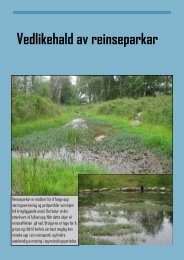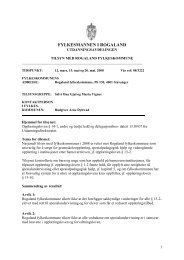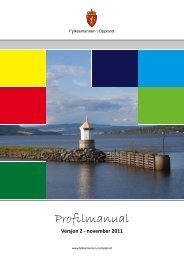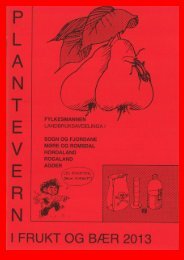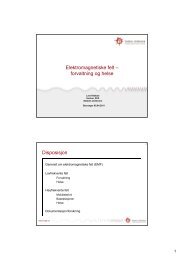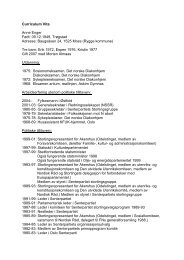Norsk svarteliste 2007
Last ned Norsk svarteliste 2007 - Artsdatabanken
Last ned Norsk svarteliste 2007 - Artsdatabanken
You also want an ePaper? Increase the reach of your titles
YUMPU automatically turns print PDFs into web optimized ePapers that Google loves.
<strong>Norsk</strong> <strong>svarteliste</strong> <strong>2007</strong><br />
Spredning og effekter av fremmede arter Dispersal and effects of alien species<br />
combating them as soon as possible after their arrival<br />
(see Box 12 on the pinewood nematode). This calls for<br />
international cooperation and good monitoring systems<br />
and routines which can reveal newcomers as early as<br />
possible.<br />
Climate change and alien species<br />
One of the most important factors offering alien species<br />
the possibility to become established in Norway is the<br />
climate. Species that are not adapted to boreal (northerly)<br />
or arctic/alpine conditions will naturally not be able<br />
to survive several months of snow and cold. The global<br />
changes in climate, which, here, are expected to result in<br />
more precipitation, longer growing seasons and shorter,<br />
milder winters, may have substantial consequences for<br />
the opportunities for alien species to establish themselves,<br />
particularly those that come from southerly<br />
latitudes. It is expected that species which are nowadays<br />
prevented from becoming established due to a relatively<br />
severe climate will have more opportunity to do so, and<br />
some of these may become invasive (Stachowicz et al.<br />
2002). Some scenarios seem to be quite obvious, for<br />
instance that some of the alien species that are only able<br />
to survive indoors now will be able to establish themselves<br />
outside. Alien insect species that exploit the stable<br />
microclimate in compost heaps to survive the winter in<br />
Norway will be able to become established elsewhere<br />
outdoors (Ødegaard 1999, Ødegaard & Tømmerås<br />
2000). Plants that have so far only survived or thrived<br />
in southern parts of the country will be able to expand<br />
northwards and upwards, provided there are suitable<br />
habitats where they can establish themselves. Many species<br />
of plants are already spreading in Norway (Fremstad<br />
& Elven 1997) and the current climate scenarios make<br />
it likely that several of these will not only expand northwards<br />
and further inland, but also become increasingly<br />
common where they have already become established.<br />
Not all expansion can be ascribed to climate change;<br />
changes in land use (both areas becoming overgrown<br />
and more areas being disturbed) will promote the dispersal<br />
of alien species.<br />
An already important group of species that will<br />
become even more prominent is garden plants that have<br />
run wild or been thrown out, and trees that have run<br />
wild from plantations (Fremstad 1999). Many of the<br />
numerous species that are grown in Norwegian gardens<br />
and green spaces, or in forestry, are so well adapted<br />
to Norwegian conditions that they have already been<br />
found in the wild. Some have been grown for a long<br />
time and have had good opportunities to spread. Oth-<br />
49




